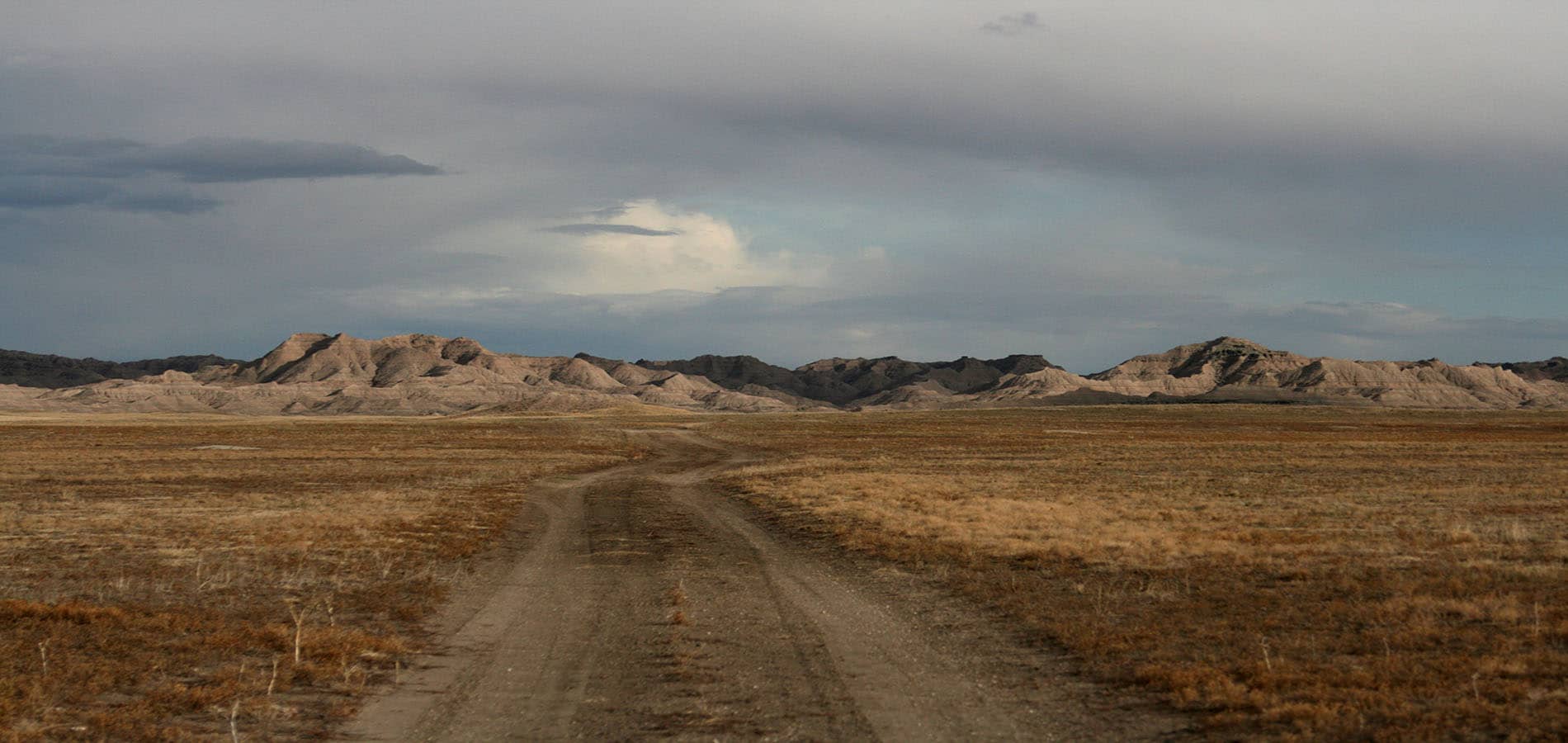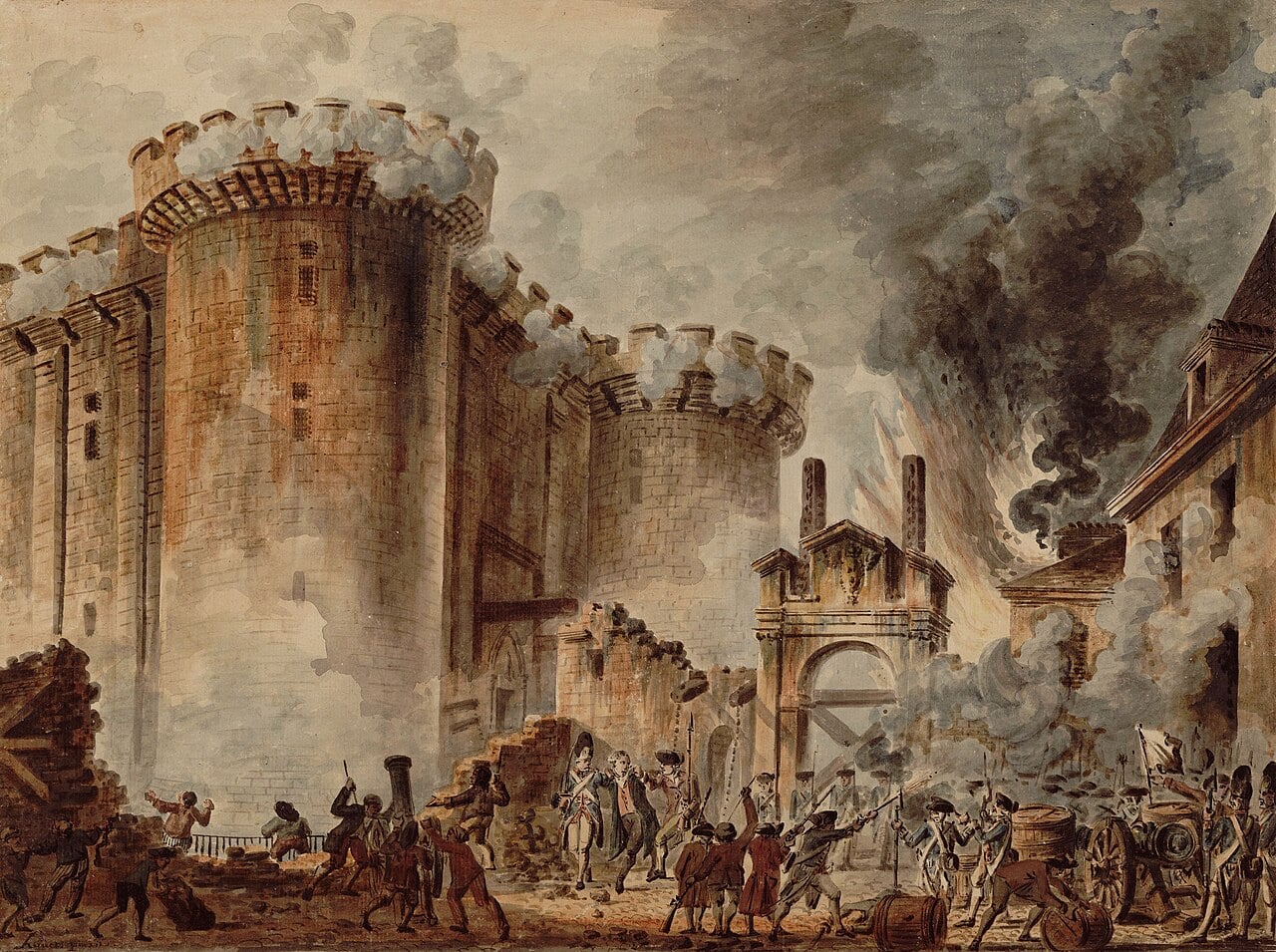This month, HeinOnline continues its Secrets of the Serial Set series with a look back on the disastrous sinking of the RMS Titanic.
Secrets of the Serial Set is an exciting and informative monthly blog series from HeinOnline dedicated to unveiling the wealth of American history found in the United States Congressional Serial Set. Documents from additional HeinOnline databases have been incorporated to supplement research materials for non-U.S. related events discussed.
These posts have been so informative; they enable both patrons and staff to understand what the Serial Set is and how invaluable it is to all kinds of research.
The U.S. Congressional Serial Set is considered an essential publication for studying American history. Spanning more than two centuries with more than 17,000 bound volumes, the records in this series include House and Senate documents, House and Senate reports, and much more. The Serial Set began publication in 1817 with the 15th Congress, 1st session. U.S. congressional documents prior to 1817 are published as the American State Papers.
The Serial Set is an ongoing project in HeinOnline, with the goal of adding approximately four million pages each year until the archive is completed. View the current status of HeinOnline’s Serial Set project below.
The Birth of Nuclear Power
An Explosive Discovery
On a wintry December day in 1938, German nuclear physicist Otto Hahn and his assistant, Fritz Strassman, accidentally discovered nuclear fission while working in their Berlin lab. Though the term atom itself derives from the Greek ατομον, meaning “uncuttable,” Hahn and Strassman defied the Ancient Greeks, splitting the nucleus of an atom and finding that the result was a sudden release of unusual amounts of energy. When explained by Albert Einstein’s e=mc2 equation, the loss of mass incurred from the process was converted into kinetic energy, which can then be converted into heat.
Little did these physicists know, they had stumbled upon the key to a new weapon of mass destruction that would ultimately kill hundreds of thousands, change the course of the impending World War, and result in a decades-long political standoff between two superpowers.
A Meeting with Einstein
The discovery was first explained in the January 1939 issue of Die Naturwissenschaften, and then identified as “nuclear fission” the next month in the February issue of Nature. The results were quickly reproduced and corroborated by physicists around the world—particularly by Enrico Fermi of Columbia University. Fermi teamed up with Hungarian physicist Leó Szilárd to build a nuclear reactor at Columbia, but during the process, Szilárd became concerned that German scientists might also attempt the same experiments and exploit nuclear energy to create some sort of weapon.
Feeling compelled to warn others, Szilárd visited Albert Einstein at his Long Island residence to explain the possibility of an atomic bomb. Szilárd drafted a letter which Einstein then signed in his name to ensure that it reached President Franklin D. Roosevelt. The Einstein-Szilárd letter, as it was later named, warned that uncontrolled nuclear chain reactions could potentially be harnessed in an extremely powerful bomb, and cautioned that Germany might attempt to be the first to do so.
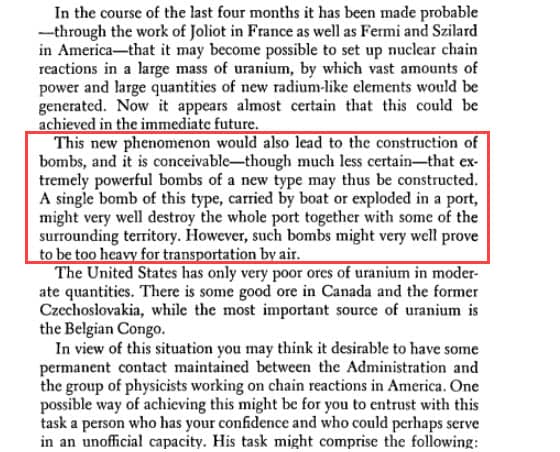
World War II Begins
Almost exactly a month later, Germany invaded Poland under the direction of Adolf Hitler. Approximately 1.5 million troops crossed the Polish border on land while, at the same time, German warships attacked the Polish navy and the German Luftwaffe bombed cities with both military and civilians present. Portrayed as an act of self-defense, the invasion was Hitler’s first attempt to colonize Polish territory with “racially superior” Germans, subduing and enslaving the “subhuman” Slavs.
The stage was set for a global conflict. Britain and France declared war on Germany two days later, initiating World War II. Brought together by their aligned expansionist interests, Germany, Italy, and Japan formed the Axis powers. Australia, Canada, and others joined forces with Britain and France to form the Allied powers.
Though the United States remained neutral at this point, the prospect of Hitler with an atomic bomb led Roosevelt to establish the Advisory Committee on Uranium, tasked with researching the potential role of the element as a weapon.
The Manhattan Project
The United States Enters the Fray
In May of 1941, the Advisory Committee on Uranium was renamed as the Office of Scientific Research and Development (OSRD) and empowered with the ability to initiate large engineering projects in addition to research—though creation of an atomic bomb had not been fully approved. That summer, Britain initiated its own atomic bomb project after its MAUD Committee found that the concept was not only feasible, but also a necessity for the war effort. The report reached the director of the OSRD in the United States that October, where it reinvigorated American atomic bomb research. Meanwhile, Soviet spies got their hands on the report as well, initiating the Soviet atomic bomb project.
Two months later, the war was brought directly to American shores when Japan launched a surprise attack on the U.S. Pacific Fleet at Pearl Harbor. Immediately, the United States declared war on Japan, leading Germany and Italy to declare war on the U.S. in kind.
Learn more about Japan’s motivations for the attack in this blog post.
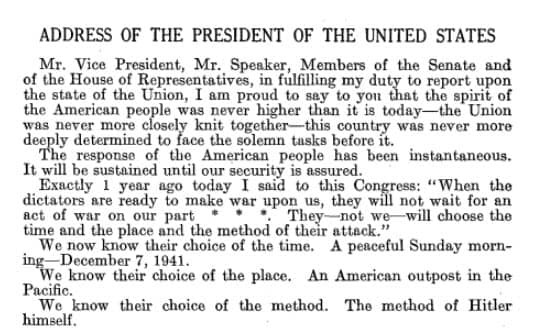
Just a month later, Roosevelt formally authorized the Manhattan Project, a top-secret U.S. effort to weaponize the nuclear energy discovered just four years earlier.
The Los Alamos Laboratory
American, British, and Canadian research efforts joined together toward one common goal—create the first atomic bomb. Remote locations throughout the United States and Canada were designated as testing sites, with Los Alamos Laboratory in New Mexico ultimately becoming the location of the first bomb test.
Throughout the research and testing years, the residents of Los Alamos were heavily controlled—the entire town shared one P.O. box (for the purposes of censoring town mail), and people who worked in the town were prohibited from divulging the location of their workplace. The town itself was not even outlined on any map; newborns in Los Alamos during the time of the project were given the birthplace of “P.O. Box 1663” on their birth certificates.
The Trinity Test
In 1945, the first bomb was ready for testing. Nicknamed “Trinity,” the test was conducted in the early morning hours on July 16, 1945. With a similar design as the “Fat Man” that would later level Nagasaki, the bomb was detonated on top of a steel tower with several notable physicists present—among them, Richard Feynman (later a key figure in the investigation of the Space Shuttle Challenger disaster), Robert Oppenheimer (the head of the Los Alamos laboratory and “father of the atomic bomb”), and Enrico Fermi (the man who created the first nuclear chain reaction in the United States).
Upon its detonation, there was an intense flash of light, a wave of heat, and an impact from the blast that knocked over fully grown men watching from miles away. A ball of fire—first yellow, then red, then purple—became a mushroom cloud reaching 7.5 miles into the sky. The detonation released an explosive energy of approximately 22 kilotons of TNT, causing the shock to be felt more than 100 miles away. The steel tower on which the bomb sat completely disintegrated—all that remained when the test was done was a five-foot deep crater of radioactive green glass created from the melted desert sand. Read these impressions from an eyewitness to the Trinity test.
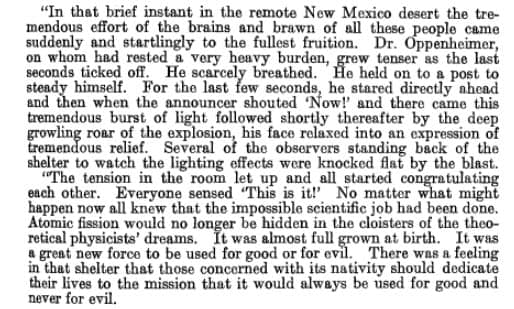
A Wartime Ultimatum
Germany had always been the original intended target for the atomic bomb, should it be successful. However, by the time of the Trinity test, the Axis powers had all but surrendered—Italy’s Benito Mussolini had been killed by members of an Italian resistance movement in April, and Adolf Hitler had committed suicide with his wife two days later. Japan was the only enemy left standing.
The month before the Trinity test, newly inaugurated President Truman had addressed Congress to formally set American sights on Japan. Ten days after the test, President Truman met with British Prime Minister Winston Churchill and Soviet Premier Joseph Stalin to demand the unconditional surrender of Japan, guaranteeing “prompt and utter destruction” if the country did not agree.
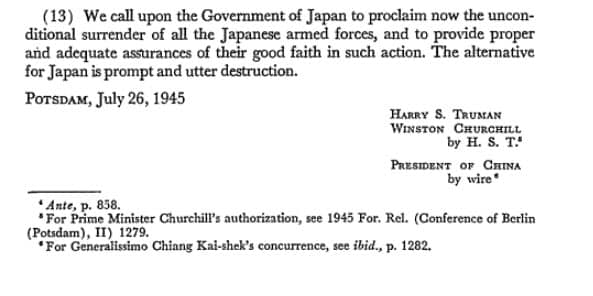
With no response from Japan a month later, America prepared for the first wartime test of its latest achievement. On August 6, 1945, the Enola Gay bomber plane flew over Hiroshima, dropping the “Little Boy” atomic bomb and decimating five square miles of the city. Read President Truman’s statement following the dropping of the bomb.
Again, the United States received no notice of surrender from Japan. Three days later, a second bomb—nicknamed “Fat Man”—was dropped on Nagasaki. In the end, the two cities were completely destroyed, and hundreds of thousands of people were killed. The day after the Nagasaki bombing, Japan announced its intention to surrender, and formally did so on August 14. Later, Congress released a report detailing the surrender of each Axis power.
Three days after the second bomb was dropped, physicist Henry DeWolf Smyth, who had worked on the bomb, released an official report providing the public with an overview of the tremendous effort that had gone into the Manhattan Project. Read the entire Smyth Report here.
Now I am become Death, the destroyer of worlds.
Nuclear Weaponry Following the War
The true power of Hahn and Strassman’s 1938 discovery had been revealed to the entire world, and it was sobering. For a few years after World War II, the United States remained the only country in possession of such devastating weaponry. That is, until the Soviet Union obtained the know-how to create a nuclear weapon through espionage, and successfully tested their first bomb in 1949. For more on Soviet espionage before, during, and after World War II, check out this report from Congress. The United States responded to this new threat by launching a program to develop an even more advanced thermonuclear weapon—the hydrogen bomb.
Growing political and economic differences between the United States and USSR drove the two countries to another war. However, with both sides hesitant to escalate hostilities for fear of an all-out nuclear conflict, the two superpowers instead fought via trade barriers, psychological warfare, proxy wars, and technological competition (a.k.a. “cold war”).
The world sat uncomfortably on the brink of global nuclear fallout into the 1960s. Then, in 1962, the Soviet Union installed nuclear-armed missiles on Cuba, just 90 miles from U.S. shores. The resulting crisis and panic ended just two weeks after it began, but left its mark on U.S.-Russian relations forever. Read more about the Cuban Missile Crisis in this blog post.
To prevent miscommunication in future situations, a hotline was installed between the White House and the Kremlin. In addition, states with nuclear weapons signed the Nuclear Non-Proliferation Treaty (NPT) in 1968, declaring their intentions to gradually work toward total nuclear disarmament. Some non-nuclear states—for example, India, Pakistan, South Sudan, and North Korea—decided either not to sign or to later withdraw from the treaty; instead, they’ve developed their own stash of nuclear weapons over the years.
Help Us Complete the Project
If your library holds all or part of the Serial Set, and you are willing to assist us, please contact Shannon Hein at 716-882-2600 or shein@wshein.com. HeinOnline would like to give special thanks to the following libraries for their generous contributions which have resulted in the steady growth of HeinOnline’s U.S. Congressional Serial Set.
- Wayne State University
- University of Utah
- UC Hastings
- University of Montana
- Law Library of Louisiana
- George Washington University
- University of Delaware
We will continue to need help from the library community to complete this project. Download this Excel file to see what we’re still missing.

